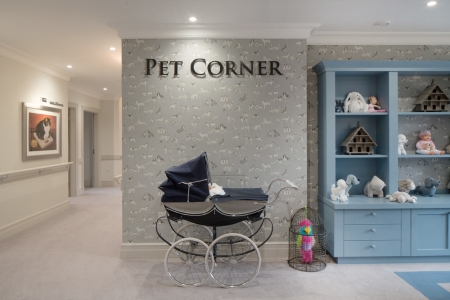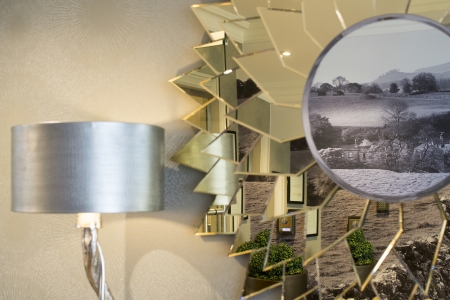Traditional care homes, with old-fashioned décor, drab furnishings, and an institutional layout are becoming a thing of the past.
The client wanted a design approach that gave a homely feel and that was different to other care homes, which can look more institutional
This more-modern approach to interiors is illustrated at The Manor House at Hambleton Grove; one of a new breed of care homes.
Operated by the Hadrian Healthcare Group, it has recently been revamped as part of a project led by Alexander James Interiors.
Located in the historic market town of Knaresborough, Hadrian Healthcare wanted the building to look as far removed from a stereotypical care home as possible.
Home from home
Ian Watson, owner and chairman of Hadrian Healthcare Group, said: “The design is traditional with a contemporary twist – it’s very important to us that our residents feel comfortable and at home.”
Every aspect in the project was designed to provide a calming and stimulating environment for residents, including those with dementia.
To make the entrance more welcoming, a glass screen was installed between the lobby and reception desk, and the desk was repositioned to face the lobby, enabling the receptionist to greet visitors in a more-approachable manner.
The house has 75 bedrooms, all of which were space planned.
Outside each door residents have a collection of personal items arranged in a wall-mounted display case to help them identify that it’s their room. Rooms also have vintage telephones with rotary dials.

The development includes a wellness suite with a beauty salon, an old-fashioned tea lounge, and a pets corner
Colour counts
In the three main lounges, and three smaller communal areas, there are muted colour palettes and tactile fabrics and textures, finished with contrasting piping.
The three dining rooms feature sturdy chairs, allowing more weight to be placed on armrests when residents lift themselves up.
And the library bar and lounge has the look of a gentleman’s club with ambient lighting and a dark-wood bar area.
In areas housing those with dementia, there are a number of relatable objects including pictures and books.
There is also a wellness suite with a beauty salon, tea lounge featuring vintage cake stands, and a massage room, as well as a marketplace with a flower shop, shopping baskets, books, games, jewellery, hats, coats and scarves, and a pets corner.
The vintage theme continues in the 1950s-style kitchen and the jazz room. Commenting on the project, Richard Morton, director of interior design at Alexander James Interior Design, said: “The client wanted a design approach that gave a homely feel and that was different to other care homes, which can look more institutional.
“Our brief was to review their current properties at that time and take The Manor House, and another of their properties, Oulton Manor, to the next level in terms of the interior design, look and feel, while addressing the various needs of the residents.
“On a practical level, we mixed functional care home fabrics with more-luxurious fabrics and dealt with art, artefacts, and accessories very early in the project to make sure the finishing touches came to fruition.
“Both properties have dementia floors where we applied themed areas with appropriate accessories to aide stimulation.
“For the residents it is more like a five-star hotel than a care home.”

